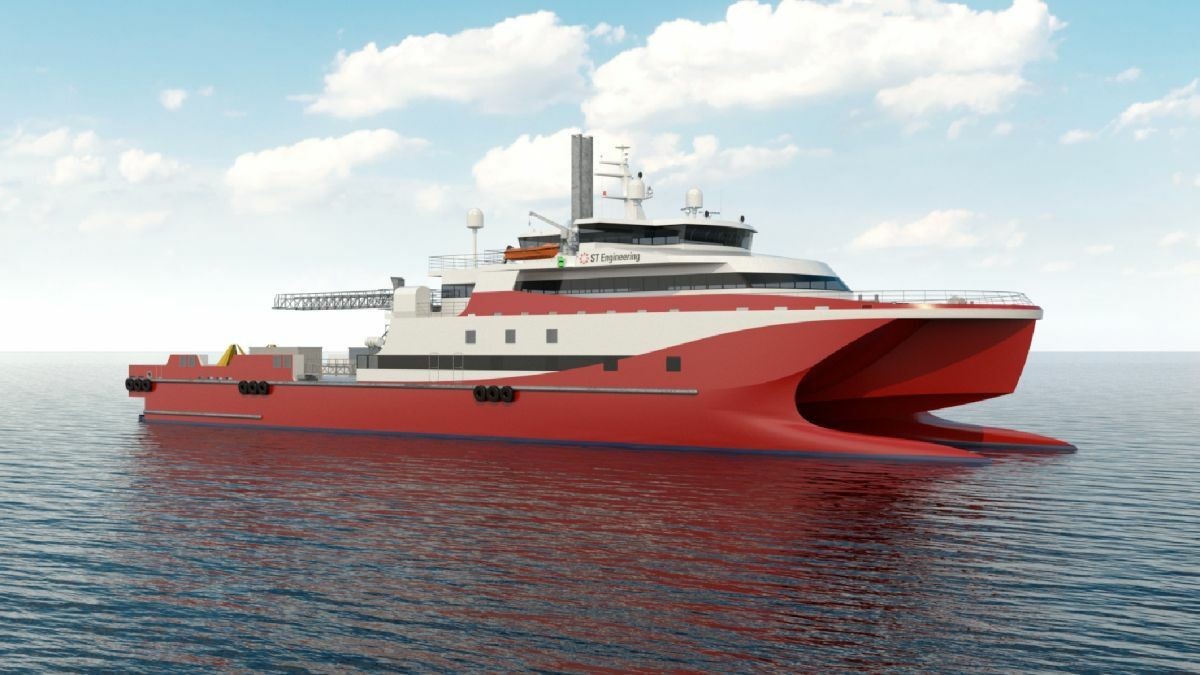
Last month, the Singapore Technologies Engineering (ST Engineering) group announced the development of a new high-speed LNG-powered work catamaran project, in collaboration with the Australian naval engineering company Incat Crowther, to be used in the transfer of the workforce employed on energy offshore platforms.
The vessel, with a length of 76 meters, has a semi-SWATH double hull shape (Small-Waterplane-Area Twin Hull) which, with a smaller section on the surface of the water compared to conventional catamarans, allows a comfortable cruise at high speed and a wide range of walk-to-work (W2W) solutions from its rear deck.
The ship is equipped with a dynamic positioning Class 2 system; its propulsion power is provided by four 10-cylinder dual fuel (LNG/diesel) engines that drive four jets of water, providing a maximum speed of 40 knots and a cruising speed of 34 knots. Inside, the catamaran has seating for 150 passengers and can accommodate 30 passengers in comfortable single cabins.
The ST Engineering group, headquartered in Singapore, specializes in the aerospace, electronics, maritime and terrestrial systems sectors. The US shipyard of ST Engineering, VT Halter Marine in Pascagoula (Mississippi), has already gained considerable experience in the construction of LNG-powered ships, creating two roll-off container ships for Crowley Maritime in service between Jacksonville, Florida and San Juan, Puerto Rico. The yard is also building the first LNG bunkering and transportation vessel for Q-LNG, LLC which is expected to operate in the South-Eastern United States and the Caribbean.
Incat Crowther is an Australian company, based in Belrose (Sydney) specializing in naval engineering with offices in Lafayette, Louisiana (United States) and Winchester (United Kingdom).
The use of LNG as fuel is an unusual choice for a crew boat, but Michael Bell senior vice president of the marine sector of ST Engineering, says that now "LNG is the first choice marine fuel to meet the most stringent IMO emissions, compared to traditional marine bunkering fuels" adding that "in the medium and long term, LNG proves to be cheaper than diesel in maritime use on most markets".
According to M. Bell, the ship's project was developed dealing with the needs of customers engaged in offshore oil, gas and renewable sources projects in different regional areas (Europe, Asia, Middle East and the Americas), to allow comfortable high-speed transit and safe transfer of the crews despite significant wave heights even in bad weather.
Source: Hellenicshippingnews
 EN
EN  it
it

